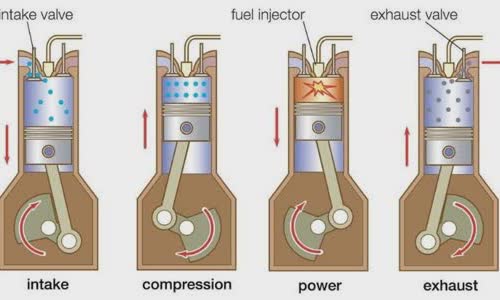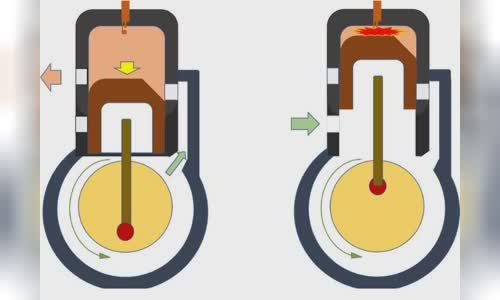How does the internal combustion engine work?
The internal combustion engine, or ICE, is an impressive piece of engineering.
It creates an engine by burning the fuel and air inside the engine to propel the pistons.
The idea is that when a small amount of fuel (such as diesel, gasoline or a renewable / alternative fuel consisting of natural gas or biodiesel) is burned in a small enclosed space, an amount of
They can also be used with hybrid electric components to increase fuel economy or the plug-in hybrid electric system to extend the range of these vehicles.
The main types of ICE are type 4, found in cars and other modern vehicles and type 2 is found in motorbikes and lawn mowers.
It is clear that with more than 1 shot, timing is crucial for it to run efficiently and evenly.
So how do these engines actually work?
4 stroke engine

A 4-stroke engine is a multi-cylinder engine in which the cylinders are usually arranged in three ways;
The cylinder is the engine core, with the piston moving up and down inside the cylinder to compress the mixture of fuel and air being sucked in as it moves down.
When I started out as a mechanic, I was always told that in order to understand how an engine works, all you need to know is "suck, squeeze, blow, blow".
But what does that mean?
The plunger (a metal rod equipped with a washer for perfect sealing) inside a cylinder starts from the top then when the intake valve opens, the plunger moves down to fill the air and
The mixture only needs to contain a small amount of gasoline compared to air.
In every movement of the engine, the tank provides oil and ensures proper lubrication.
Then, the piston moves back up the cylinder to compress the fuel / air mixture.
Compression makes the mixture more flammable and the explosion stronger.
When the piston reaches the top of its journey, a spark plug, a device that emits an electrical spark when a charge passes through it, emits an electrical spark to burn the gasoline.
Literally the amount of gasoline in the cylinder explodes, creating hot gas that pushes the piston down again.
When the piston hits the bottom of its stroke, the exhaust valve or the outlet will open.
The crankshaft (a device that changes the linear movement of the plungers into rotational movement to ensure all the pistons run synchronously) pushes the plunger back with the help of a connecting rod.
This forces the exhaust air up the cylinder, out the exhaust valve, and down the exhaust.
2-stroke engine

The two-stroke engine in its most authentic form is very simple in terms of both construction and operation.
It has only three main moving parts, all of which also participate in the 4-stroke alternative above;
However, there is another one that resembles a reed valve.
The two-cycle cycle is a little more confusing because unlike a 4-cycle engine, certain phases of the cycle happen at the same time, so it is difficult to know when to end and start next.
The two-stroke engine uses both the cartridges and the cylinder to achieve all the elements of the Otto cycle in just two squeezes of the piston.
This type of engine is lighter, much simpler, and has a greater capacity to increase power, as it makes every rotation, unlike a 4-stroke engine that fires every other engine.
The fuel / air mixture is sucked into the cacte by a vacuum created during the ascent of the piston.
During descent, the valve is forcibly closed by the cartridges pressure.
The fuel mixture is compressed in the cartridges during the journey.
Toward the end of the stroke, the piston exposes the intake so that the compression mixture in the cartridges can flow around the piston into the main cylinder.
This pushes the exhaust out of the exhaust port, located on the other side of the cylinder, but this could mean some fuel mixture is wasted.
The plunger goes up and compresses the fuel mixture.
While this is happening, another load is being performed below it.
When the stroke reaches the top, the mixture ignition spark plugs out, driving the plunger down to complete the cycle.
So we got it, now you'll be able to explain the internal combustion engine, more specifically the 2 and 4-stroke variants, to anyone with ease.
ICE has revolutionized the world of transportation, and unlike its external counterparts such as steamboats, it does not fire off large amounts of steam or byproducts.
The problem is that with the ever-growing green movement taking place today and electric cars especially at the forefront of the automotive sector, ICE will eventually become a thing of the past.
Tesla, for example, is the main manufacturer of high-end electric cars with more gismos than you might imagine and with brands like Nissan and Renault releasing these cars every day, it sounds like a bell.
At least for now, though, you already understand how your car engine works and know what happens to the fuel tank you seem to be filling every week.
 52ºc, New York
52ºc, New York







